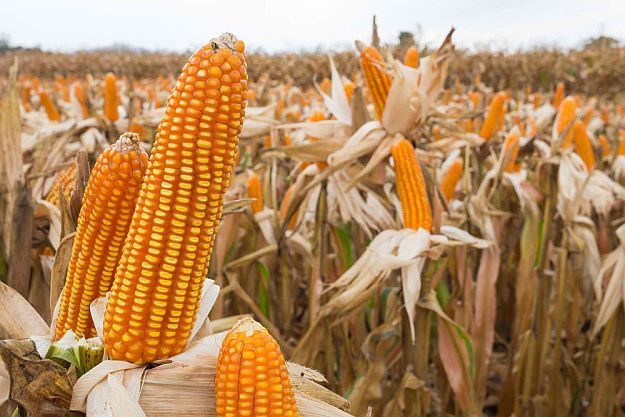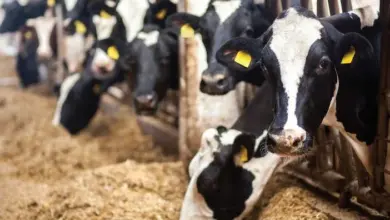Zimbabwe: Record Harvest Expected in 2020/21 Season

Government is expecting an increase in crop production under Command Agriculture after the planting hectarage increased by over 18 percent for the 2020/21 farming season, with maize, tobacco and cotton yields expected to rise.
The increase in hectarage is expected to see maize production under the scheme surpassing the one million tonnes mark from last season’s harvest of around 900 000 tonnes. There is, however, expected to be a decline in yields for small grains.
Lands, Agriculture, Fisheries, Water and Rural Resettlement Minister Dr Anxious Masuka this week confirmed the development saying crop yields under the scheme, including the Presidential Cotton Programme were set to increase.
“We had set ourselves a target of 1,5 million hectares of maize for 2020/21 season. As of 31 January, the verified hectarage was 1,7 million hectares which is 18 percent above our target,” Minister Masuka said.
“Generally, we have done well in all the crops inclusive of cotton, inclusive of tobacco, but not so well on traditional grains because in a good rainfall season, farmers tend to grow more maize and less small grains. We have also seen an increase in soya bean production, but not to the extent that we wanted to see.”
In terms of inputs distribution, Minister Masuka said there was great improvement compared to previous years, but there was need to distribute the inputs on time.
“The verified hectarage by 31 January was 58 percent for maize and teams are on the ground for the first crop and livestock assessment whose results should be out by the end of this month. We are very excited by this programme.
“In terms of the Presidential Cotton Programme, 393 000 out of 400 000 holds enrolled for this programme, which is again exciting. It will be certainly be a better season than previous seasons,” said Minister Masuka.
Government was working tirelessly to avail enough inputs to farmers under Command Agriculture in the 2021/22 farming season.
Command Agriculture is central to increasing maize production, boosting the Strategic Grain Reserve and saving the country a lot of foreign currency through import substitution.
It has over the years contributed to overall economic growth and food security.
Presenting a policy paper on Command Agriculture to students at the Zimbabwe Staff College, Minister Masuka said agriculture was beginning to anchor the much needed transformation to an upper middle income economy.
He said going forward, emphasis would be placed on availing inputs to farmers on time to realise better yields.
“Inputs still are an issue. We have not been able to distribute all the inputs on time and as you see this year, we are still distributing Ammonium Nitrate (AN) fertiliser. This is mid-February and we should have done that around early November into early December last year,” said Minister Masuka.
Command Agriculture, he said, saw maize production increase from 575 582 tonnes in the 2015/16 season to 2 443 119 metric tonnes at the 2016/17 farming season.
Without the programme, the country would have needed to import 700 000 tonnes in the 2015/16 farming season. Despite erratic rains in the 2017/18 season, maize production was 1 708 702 tonnes going down to 776 635 tonnes in the 2018/19 season and 907 229 metric tonnes in the 2019/20 season.
Command Agriculture was an import substitution concept deliberately meant to empower local producers of cereal crops boosting capacity for locals and creating employment for thousands of people in the sector.
“At an import parity of US$300 per metric tonne, this would require US$210 million, hence Command Agriculture eased pressure on the nostro fund,” he said.
There was great potential for Command Agriculture to support the Agricultural Sector and Food Systems Transformation Strategy (AFSTS) to drive economic transformation towards vision 2030.
AFSTS 2020-25 seeks to revive, restructure, reform, rebuild and transform the agriculture sector from a US$5,2 billion sector to US$8,2 billion sector contributing 20 percent Gross Domestic Product and anchoring Vision 2030.
The major causes of low production in some seasons include climate change, droughts, floods, pest and diseases, limited access to finance, lack of skills, low inputs use and inadequate mechanisation and irrigation infrastructure.
Following a decline in maize production trends since 2000, Government adopted Operation Maguta and the Command Agriculture programmes to boost production on farms.
Command Agriculture, now called the National Enhanced Agricultural Productivity Scheme (NEAPS) was introduced in the 2016/2017 summer cropping season.
The programme targeted a minimum production of two million tonnes of maize grown on 400 000 hectares of land.
The programme was rolled out on a cost recovery basis. Other components of the programme in addition to maize were soya bean, wheat, irrigation, mechanisation, beef, poultry, wildlife and fisheries.
He said Command Agriculture had two models; Model 1 which had financiers not interested in buying produce and Model 2 with financiers as off takers of produce.
Most farmers that had struggled to secure a markets for their produce and this encouraged them to enter into contract farming agreements with Government.
The scheme gave farmers access to inputs on contract basis and these enabled farmers to be more productive.







